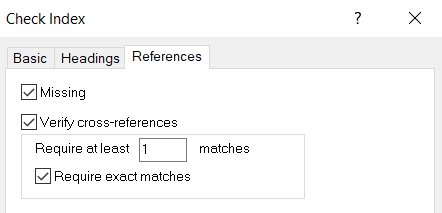Circular Cross References
Indexes: Structure & Composition
My blog post, Anatomy of an Index, lays out the basic structural foundation of indexes: the entry.
A Rose by Any Other Name Would Be Hard to Find discusses how indexes promote findability of concepts through the use of the different types of cross references as well as double posting.
Those blog posts, however, did not discuss a glitch that can easily slip through the cracks, to be included in the published index: the circular cross reference.
Like a Cat Chasing Its Tail
Circular cross references are the opposite of helpful. They are a mistake that should be caught during the editing stage (if not sooner) of indexing.
They are called circular cross references because they create a loop in which the unwitting reader will look up one index term, be pointed to what is assumed to be the preferred term through a See reference, only to be tragically referred back to the original term by way of another See reference:
cats. See felines
dogs…
elephants…
felines. See cats
It’s easy for these accidents to find their way into an index since indexing can be messy, especially in the beginning, and the line separating preferred/non-preferred terms can be fuzzy.
The other side of the circular cross reference coin is the issue of subheadings being gathered under two separate entries that essentially convey the same idea but with different language. These separate (aka scattered) listings should be gathered under one main heading, with a See reference to direct the reader to the location of the entire discussion.
The Whole Picture
An index entry should show the reader all the relevant information about a topic — having subheadings scattered between two synonymous terms will at best look sloppy, and at worst will be misleading; the reader may think that the one term lists all locations where that topic is discussed and therefore they will miss the parts of the discussion listed under the synonymous term.
Circular cross references are just as bad (if not worse) in that they openly cause frustration…as the best-case scenario. Perhaps worse than the frustration to the reader, this type of error can cause an entire concept that should be present in the index to be completely missing from the index and therefore hamper findability.
Importance of Editing
Editing an index, as in writing, is the last major step of the indexing process but it is by no means necessarily the shortest. It is a process that takes a lot of time and concentration, and there are many things (a whole checklist, actually) that must be attended to during editing.
Checking the cross references is one important step of the editing process. I visually check each entry to fix circular cross references and ensure that everything that needs a see also reference, has one. I also double-check my work by using “Check index” tool in Cindex, my indexing software.
The “Check index” tool helps catch any missing or superfluous cross references that may have slipped past my own editing eyes.
A quality index should have exactly zero circular cross references. While they may occur during the indexing process, the step of checking cross references during editing should result in their removal, for an ultimately polished, helpful, and not-even-slightly frustrating final index.
